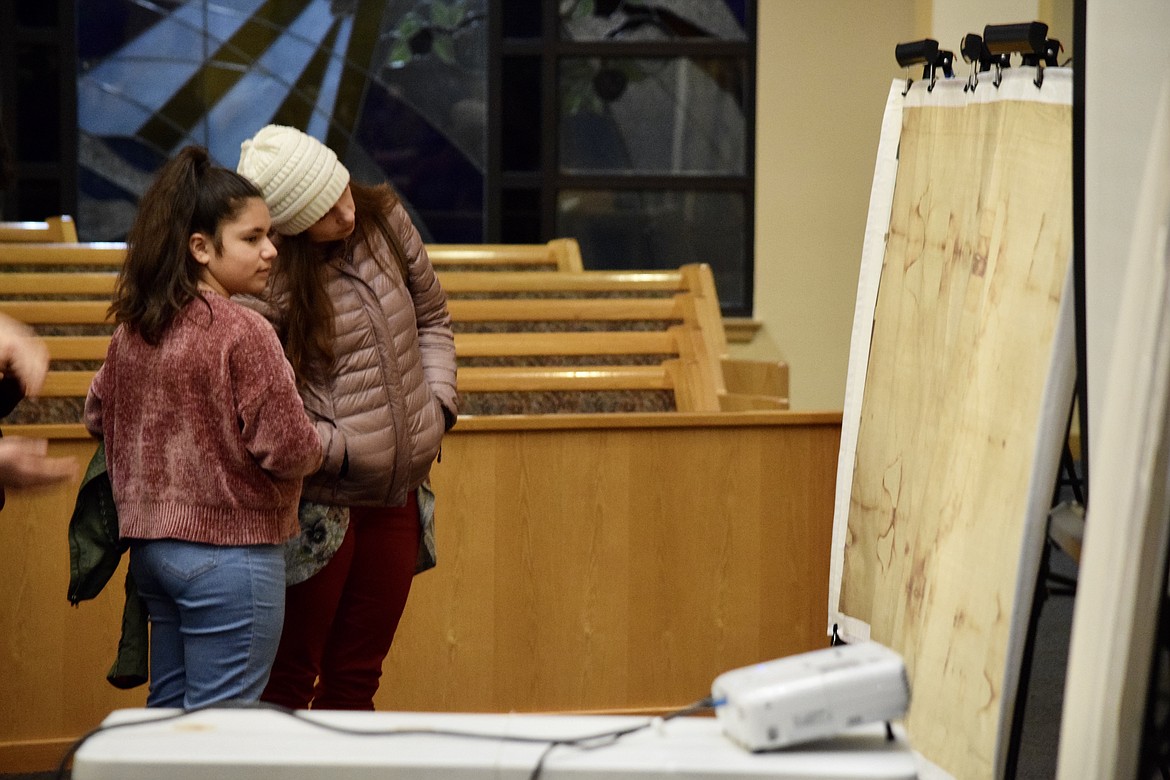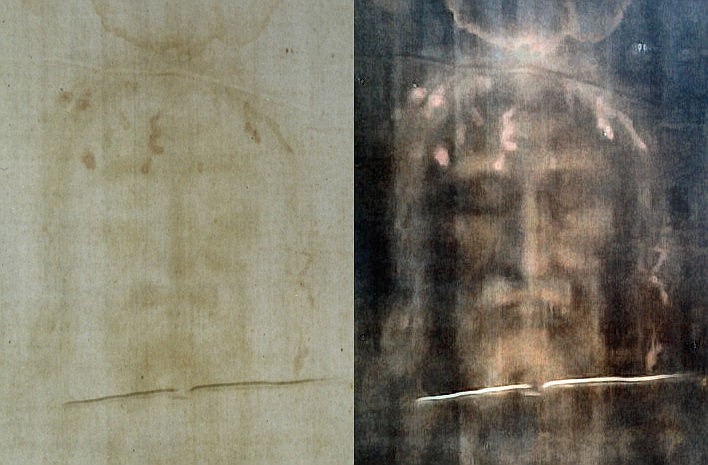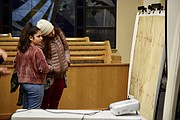Mystery of Shroud of Turin comes to Moses Lake
MOSES LAKE — The Shroud of Turin is one of the “greatest unsolved mysteries in the world.”
According to Bill Wingard, who travels the world talking about the ancient piece of cloth that many believe to be the burial shroud of Jesus Christ, it is also “the greatest evangelistic tool of our age.”
“Look at the shroud as a testament of love, as you fall in love with God, your whole life will change,” Wingard said during a presentation Thursday at Our Lady of Fatima Catholic Church in Moses Lake.
Wingard, who lives in Baltimore, Maryland, founded Shroud Talks, and has devoted his retirement to making a case to believers and non-believers alike for the Shroud of Turin’s authenticity in churches, schools and prisons wherever he can.
All four Gospel accounts of the life, death and resurrection of Christ relate that he was wrapped in a linen cloth and placed in a tomb by Joseph of Arimathea, a wealthy and respected follower of Jesus.
Wingard said that linen cloth is the Shroud of Turin.
“What is this?” he said as he pointed to a life-size image of the shroud. “It’s a burial cloth upon which the image of a man is affixed.”
But it’s more than that, Wingard said. The image appears only on one side of the cloth, and the visible image has all of the properties of a photo negative, while the negatives produced by the very first photographs of the shroud more than 100 years showed a great deal more detail than the actual image itself does.
“The negative image had all the properties of a positive,” he said.
And what caused or created that image has baffled some of the finest scientific minds in the world since scientists were first able to examine the shroud, Wingard said.
Wingard said the shroud itself is well attested to in history, being traced from Antioch to Edessa to Constantinople and eventually making its way to France and then the city of Turin, Italy. Ancient Christians and even Muslims revered the shroud, and folded it to display the face; just one more important relic from the time of Jesus, he added.
It disappeared from time to time, survived fire and water and patching by medieval nuns, and was spirited away to a secret monastery in northern Italy during the Second World War to protect it from German leader Adolf Hitler and his armies, Wingard added.
“It’s currently the property of the pope,” he said.
And it currently resides in the Cathedral of Turin in a sealed titanium case filled with an argon atmosphere to keep it safe, Wingard said. Argon is an inert gas that reacts with almost nothing and makes up a little less than 1 percent of the Earth’s atmosphere.
The man whose image appears in the shroud was tortured, Wingard said. He was scourged bloody on both his back and his front, his nose was broken and his cheek was swollen, and he had a black eye — in addition to holes in his hands and feet.
“The crown of thorns was probably the most painful,” he said.
Wingard said analysis of the shroud by a group of scientists in the late 1970s found pollen from Near Eastern plants, specks of dirt native to Jerusalem, and human blood — type AB. He also said the blood remained red, as opposed to turning brown, because the liver changes the blood chemistry of people who suffer “a severe violent death.”
“This is not the product of an artist,” he said. “But (an image of) a real human man and an ongoing mystery.”
Whatever the provenance of the shroud, Wingard told the crowd gathered at Our Lady of Fatima to listen and look at a replica of the shroud that it is a strong testimony of God’s love for the world.
“‘I gave you myself.’ This is what the shroud says,” he said. “There is so much evidence to prove that this is Jesus Christ’s burial cloth.”
Charles H. Featherstone can be reached at cfeatherstone@columbiabasinherald.com.







